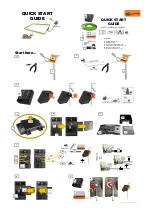
Smart LTE Module Series
SC650T Hardware Design
SC650T_Hardware_Design 107 / 131
9.2. Manufacturing and Soldering
Push the squeegee to apply the solder paste on the surface of stencil, thus making the paste fill the
stencil openings and then penetrate to the PCB. The force on the squeegee should be adjusted properly
so as to produce a clean stencil surface on a single pass. To ensure the module soldering quality, the
thickness of stencil for the module is recommended to be 0.18mm~0.20mm. It is recommended to slightly
reduce the amount of solder paste for LGA pads, thus avoiding short-circuit. For more details, please refer
to
document [4]
.
It is suggested that the peak reflow temperature is 240~245ºC, and the absolute maximum reflow
temperature is 245ºC. To avoid damage to the module caused by repeated heating, it is strongly
recommended that the module should be mounted after reflow soldering for the other side of PCB has
been completed. The recommended reflow soldering thermal profile (lead-free reflow soldering) and
related parameters are shown below.
Temp. (°C)
Reflow Zone
Soak Zone
245
200
220
240
C
D
B
A
150
100
Max slope: 1~3°C/sec
Cooling down
slope: 1~4°C/sec
Max slope:
2~3°C/sec
Figure 49: Recommended Reflow Soldering Thermal Profile
Table 51: Recommended Thermal Profile Parameters
Factor
Recommendation
Soak Zone
Max slope
1 to 3°C/sec
Soak time (between A and B: 150°C and 200°C)
60 to 120 sec






































